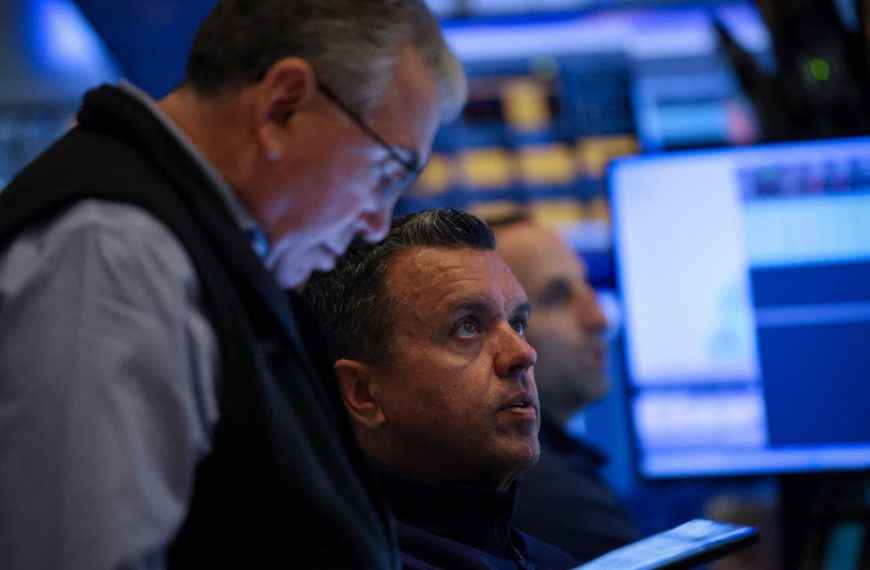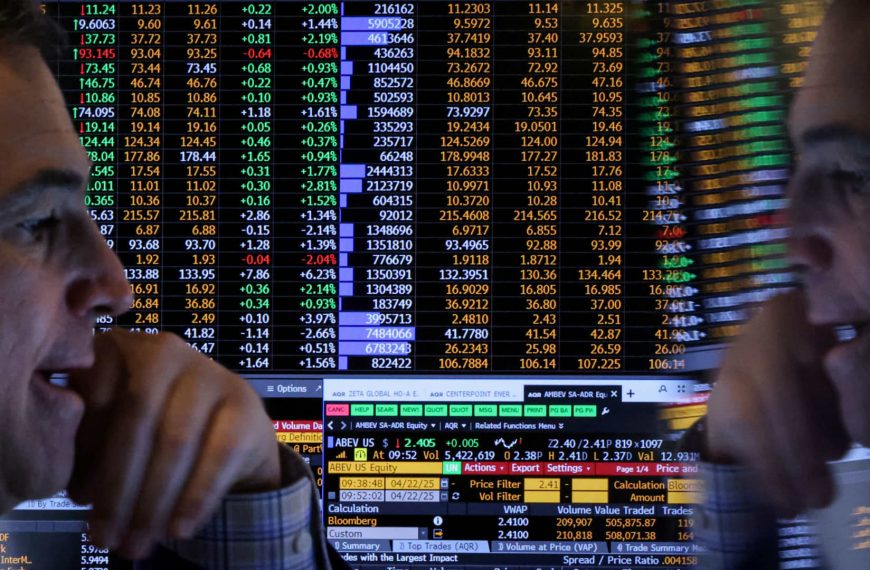On a day filled with market fluctuations, U.S. stocks experienced a notable surge on Wednesday, yet the S&P 500 continues to struggle to recover from a significant downturn triggered by President Donald Trump’s trade policies. After reaching an all-time high in February, the benchmark index saw a steep decline into correction territory by March, leaving it down 12.5% from its peak as of Wednesday. This drop reflects a broader trend of volatility that has led to an astounding loss of $6.5 trillion in market value since February, according to Howard Silverblatt, a senior index analyst at S&P Dow Jones Indices.
The Current Market Situation: What Lies Ahead?
As investors grapple with uncertainty, the pivotal question remains: when will the market stabilize? The truth is, predicting the bottom of the market is inherently difficult. The S&P 500 recorded its lowest closing price of the year on April 8, marking an 18.9% decline from its February peak. Since then, it has not revisited that low, and speculation on whether it will continue to rise is rampant.
Historical Insights: Understanding Market Corrections
Historically, the S&P 500 has undergone 24 corrections since the conclusion of World War II, as noted by Sam Stovall, chief investment strategist at CFRA Research. Notably, when the S&P enters a correction without slipping into a bear market, it typically takes an average of 133 days to reach a bottom and around 113 days for recovery. If April 8 proves to be the lowest point, the 48-day timeframe from peak to trough would be considerably quicker than the historical norm.
- Key Historical Data:
- Average time to bottom: 133 days
- Average recovery time: 113 days
- Time to confirm a correction this year: 22 days (compared to a historical average of 77 days)
Stovall emphasizes that rapid declines often lead to shorter corrections. “Swift declines tend to be shallow and short-lived,” he remarked, although he cautions that history should be interpreted with care.
Retesting Lows: A Potential Market Pattern
The closing price of the S&P 500 on April 8 was 4,982.77, prompting some analysts to predict a potential "retest" of this low. Nick Colas, co-founder of DataTrek Research, noted that for the April lows to hold, sufficient shifts in trade policy would need to emerge, offering hope to investors. He referenced the 1987 market crash, where a significant drop was followed by a brief rally, only to retest those lows later, which ultimately marked the bottom before a rebound.
Market Recovery: What to Expect?
The last significant correction for the S&P 500 occurred in 2023, where a decline was swiftly followed by a recovery in just 24 days. However, Adam Turnquist, chief technical strategist at LPL Financial, expressed caution about expecting a rapid recovery this year, noting a lack of key indicators typically associated with a market rebound.
- Current Indicators:
- Defensive stock dominance suggests cautious investor sentiment.
- CBOE Volatility Index and CNN’s Fear and Greed index hitting highs indicate market anxiety.
Turnquist asserts that while peak fear may have passed, a sideways grind is more likely as the market seeks to build a solid foundation for future growth.
Strategies for Investors Moving Forward
Identifying a market bottom can challenge even seasoned investors. According to Yusuf Abugideiri, a certified financial planner, maintaining patience and a strategic approach is essential. “The patient, disciplined, policy-based investor will ultimately be rewarded in the long run,” he advises.
For younger investors, market corrections may present valuable buying opportunities, while those nearing retirement should consider diversifying into safer assets like Treasuries and money market funds to safeguard their investments.
Ultimately, the trajectory of the market heavily relies on the clarity of policies from the White House. “If investors receive clearer signals and less uncertainty, market reactions will likely be positive,” Abugideiri concluded.
In conclusion, while the market remains in a state of flux, understanding historical patterns and maintaining a disciplined investment strategy can help investors navigate these challenging waters.











